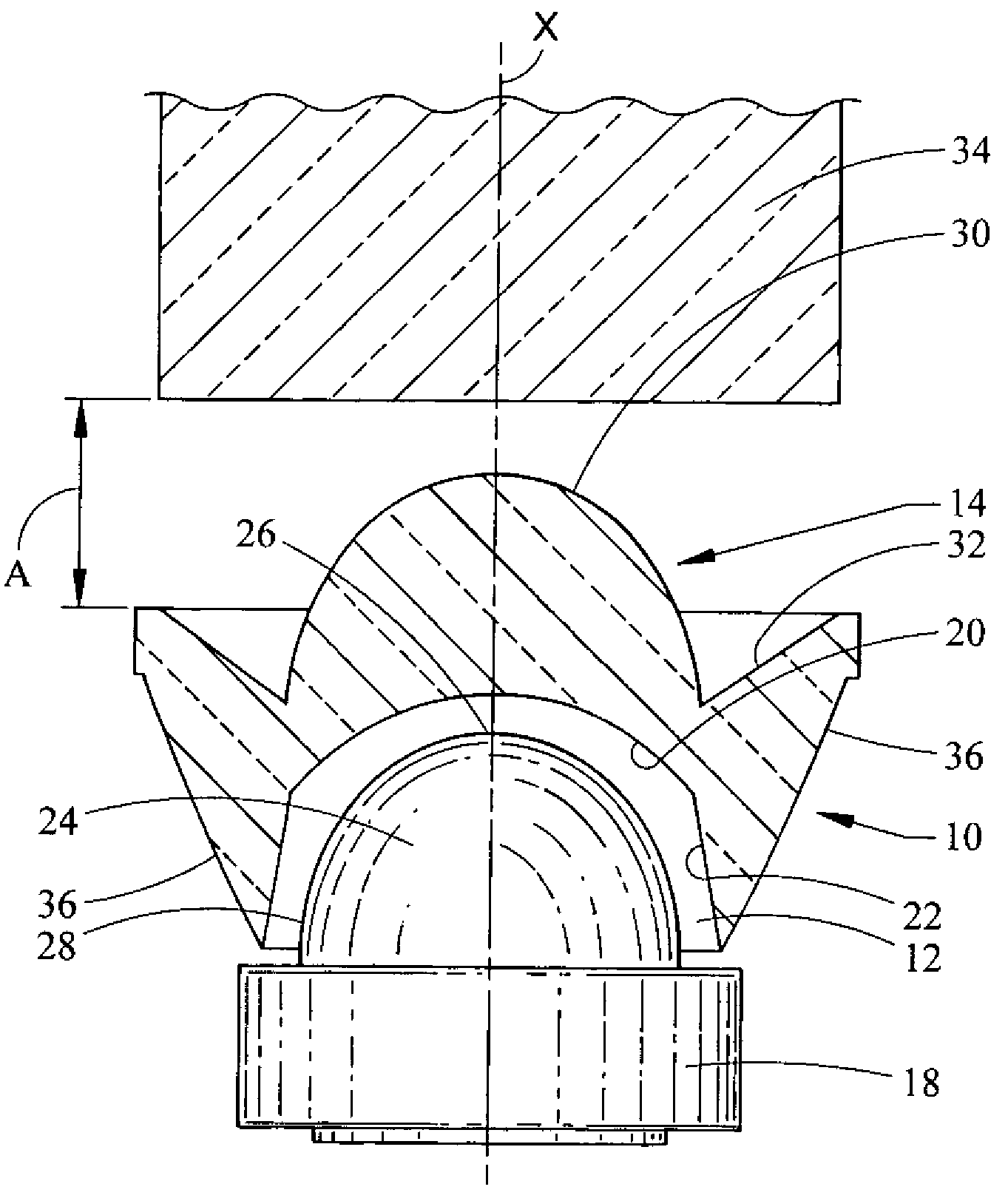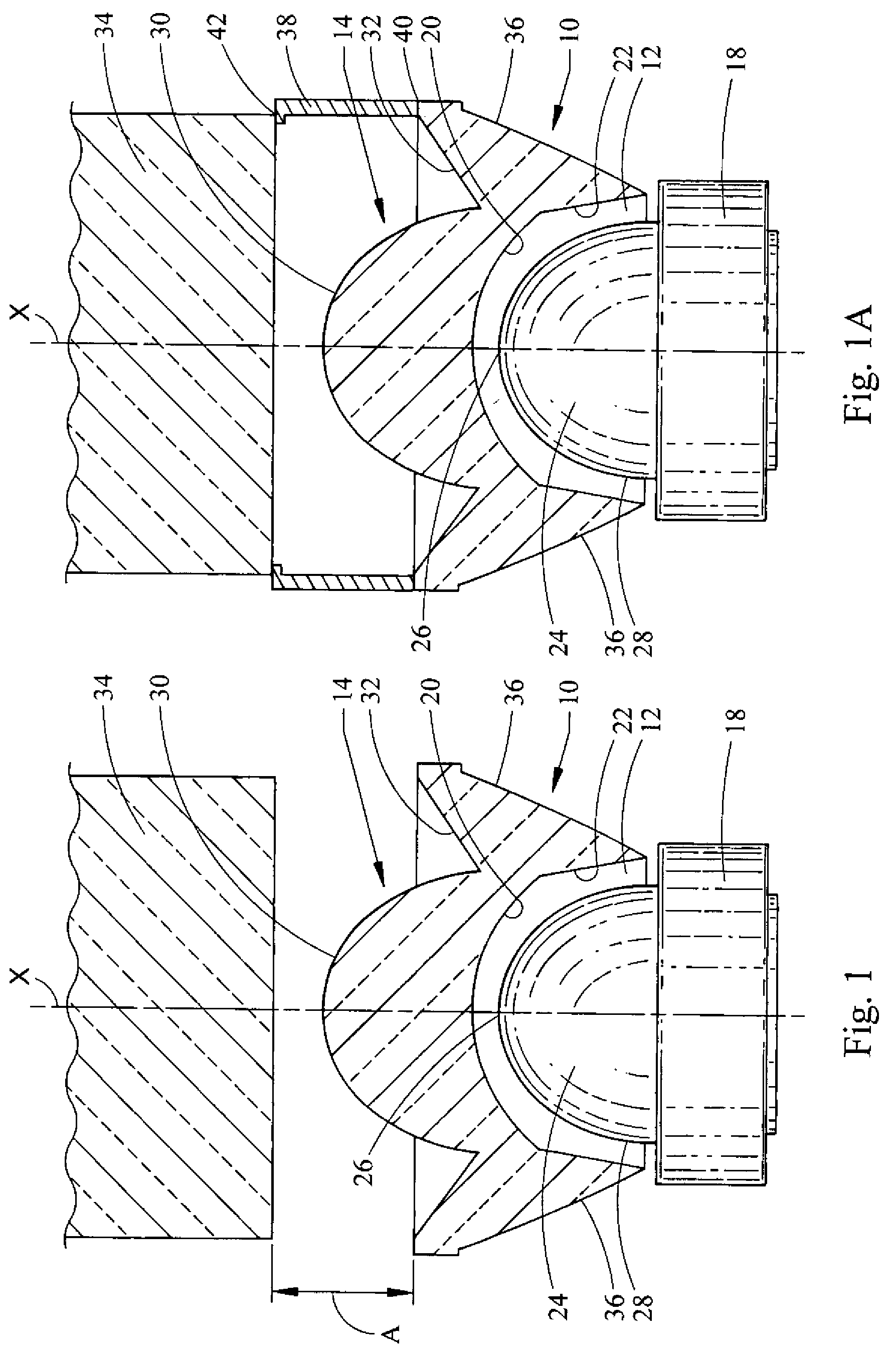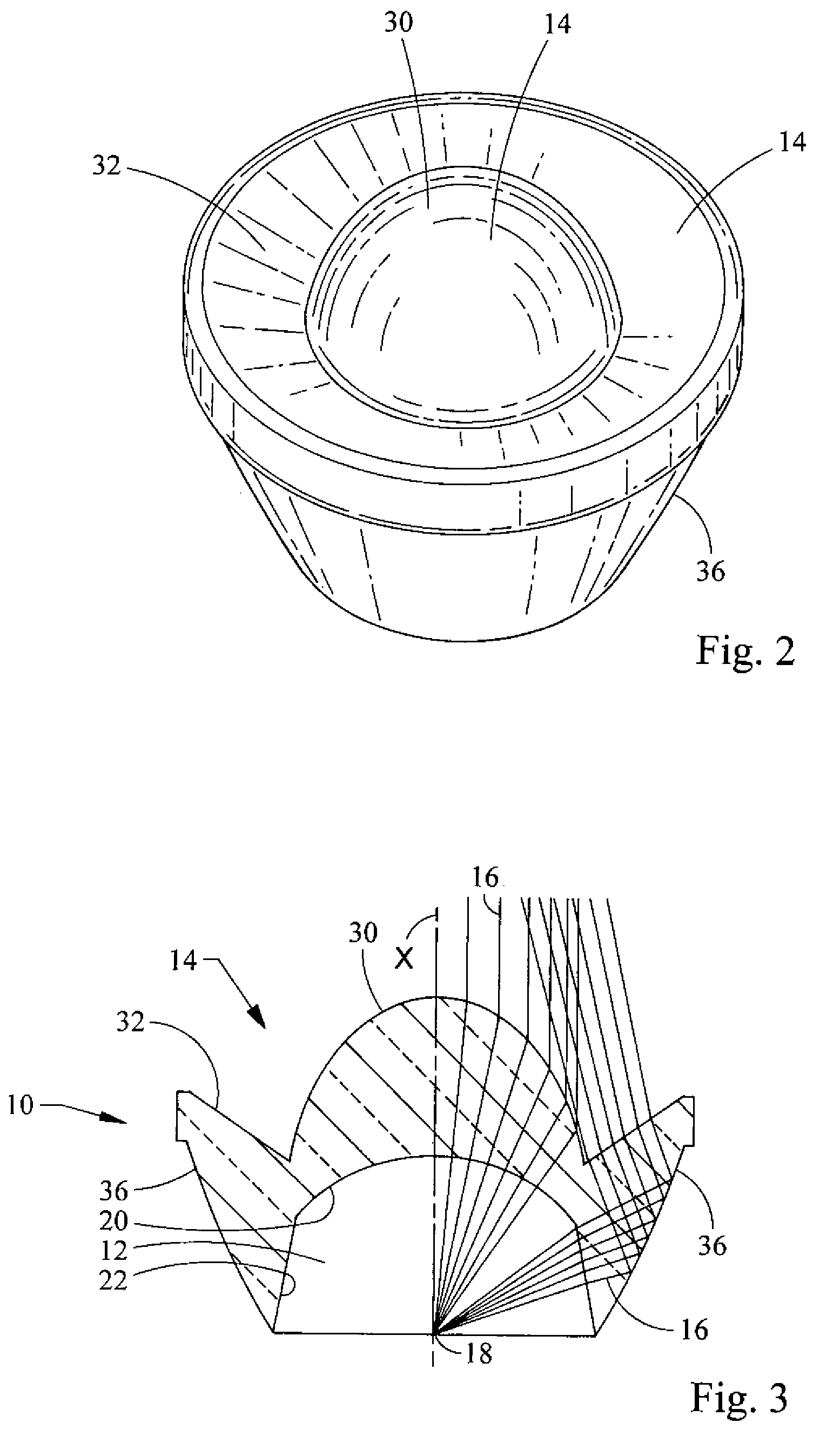Near field lens
a near field lens and lens body technology, applied in the field of near field lenses, can solve the problems of high power consumption, difficult optical design and manufacturing of light pipes, and difficult optical design of light pipes, so as to achieve the effect of improving optical efficiency, reducing optical efficiency, and reducing optical efficiency
- Summary
- Abstract
- Description
- Claims
- Application Information
AI Technical Summary
Benefits of technology
Problems solved by technology
Method used
Image
Examples
Embodiment Construction
[0018]Referring now to the drawings, a lens embodying the principles of the present invention is illustrated therein and designated at 10. The lens comprises a main body, which is made of a light-transmitting material, preferably, an optical grade plastic, such as polycarbonate or acrylic. The lens 10 may be created by any suitable method, including without limitation, by injection molding. The main body of the lens 10 has a light-collecting face 12 and a light-emitting face 14. An optical axis X extends through the main body of the lens, extending through the centers of the light-collecting face 12 and the light-emitting face 14.
[0019]The light-collecting face 14 defines a pocket in the body of the lens 10 for receiving light 16 from a light source 18, which is illustrated as a light-emitting diode (LED) in this embodiment and hereafter referenced as such. The light source 18 could alternatively be a Lambertian emitter, a 2π emitter, a fiber optic wire guide tip, or any other suita...
PUM
 Login to View More
Login to View More Abstract
Description
Claims
Application Information
 Login to View More
Login to View More - R&D
- Intellectual Property
- Life Sciences
- Materials
- Tech Scout
- Unparalleled Data Quality
- Higher Quality Content
- 60% Fewer Hallucinations
Browse by: Latest US Patents, China's latest patents, Technical Efficacy Thesaurus, Application Domain, Technology Topic, Popular Technical Reports.
© 2025 PatSnap. All rights reserved.Legal|Privacy policy|Modern Slavery Act Transparency Statement|Sitemap|About US| Contact US: help@patsnap.com



